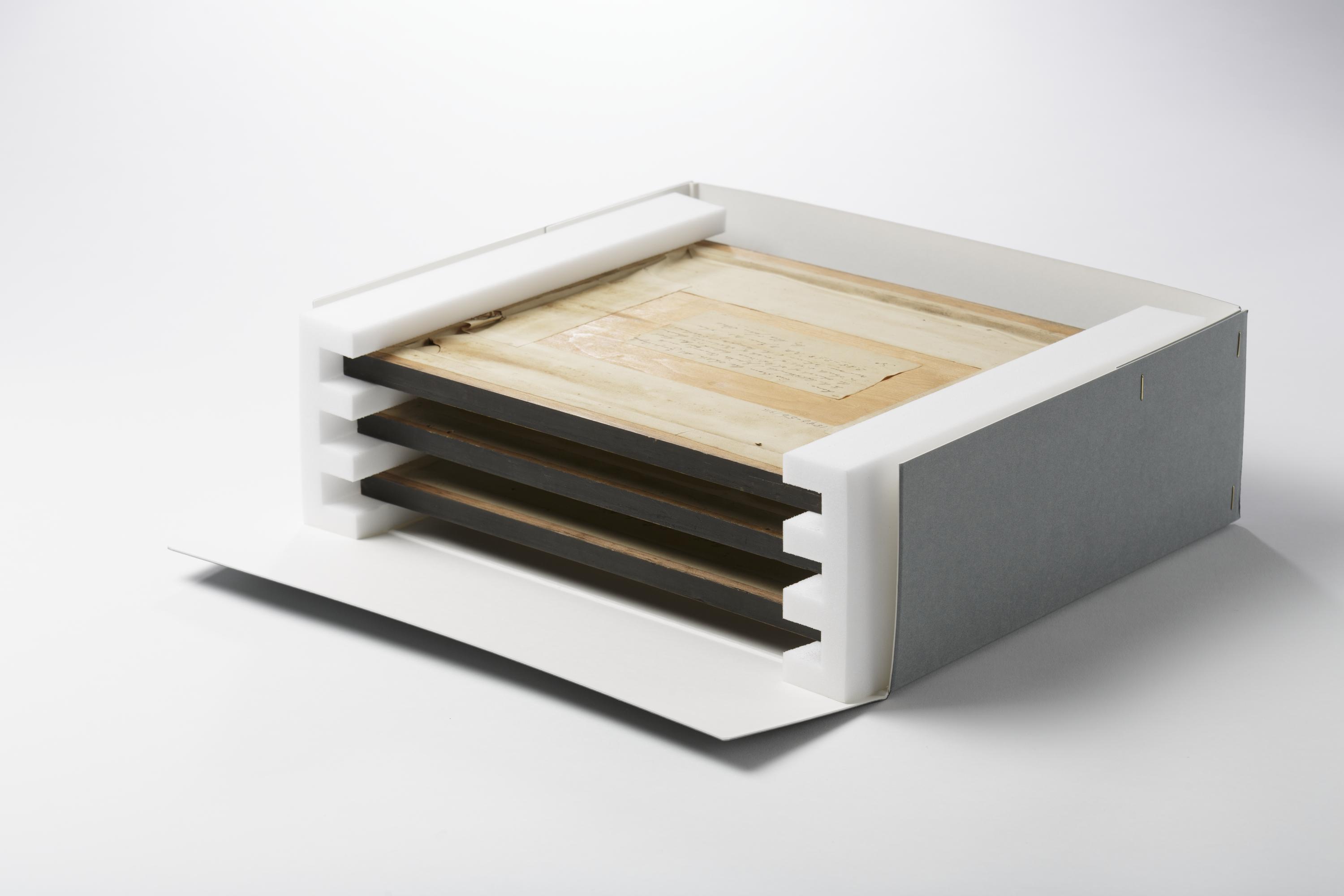
The daguerreotype was the first photographic process, having been announced to the world in 1839. Its inventor was Louis-Jacques-Mandé Daguerre. The French government gave the process free to the world except for England. Nonetheless, here at the National Science and Media Museum we have a wonderful collection of hundreds of daguerreotypes; among them is the Ellis daguerreotypes collection.
Alexander John Ellis (1814–1890), better known for his work in mathematics, phonetics, philology and music, was also an amateur photographer. Ellis produced a group of 137 daguerreotypes of views of Italy with the assistance of Achilles Morelli and Lorenzo Suscipj. This body of work is composed of 159 whole daguerreotype plates (6.5 x 8.5 inches) and is held here at the National Science and Media Museum in Bradford.
A daguerreotype plate consists of a highly polished silver-plated sheet of copper with light-sensitive materials (silver iodide, silver bromide or a combination of both). Upon exposure in the camera, the daguerreotype plate would be exposed to mercury vapours to create an amalgam with the silver in the areas exposed to the light. This process of manufacture results in its characteristic highly reflective mirror-like image. To conclude the process, the daguerreotype was washed and fixed with sodium thiosulfate, making the image permanent.

Daguerreotype, entitled “Naples, View from the second floor, South Window of Riveria di Chiaja No 57, looking East”, taken by Alexander John Ellis on 25 May 1841 © Science Museum Group collection

Daguerreotype, entitled “Naples, View from the second floor, South Window of Riveria di Chiaja No 57, looking East”, taken by Alexander John Ellis on 25 May 1841 © Science Museum Group collection
As with any other object composed of silver, it is very prone to corrosion. Thus, daguerreotypes are always found inside sealed cases or frames to prevent air penetration. While inside the case, the daguerreotype plate is also protected from scratches and environmental pollutants. The cover glass used to protect the daguerreotype can also deteriorate—known as glass disease—and in time drop onto the plate’s surface.
To ensure the long-term care of daguerreotype collections, conservators need to consider many factors. These include the condition of the plates and the different materials used to construct the cases and frames, mainly because if there are gaps, these allow air penetration that will cause tarnishing and corrosion. We need to consider also the temperature, pollutants and humidity of our storage areas, in addition to light and UV levels.
The Ellis daguerreotypes were stored in their original Victorian cabinet. This ensured the plates were protected from exposure to light and kept them stored vertically. However, the cabinet is not up to conservation and collections care standards. As it is made of wood, it has contracted and expanded with fluctuations of temperature and humidity, and over time the frames of the plates have become scratched along the upper and lower edges.

The condition of the plates varies, but there is overall evidence of glass disease, tarnishing along the boards of the image, and loss of adhesion of binding tapes. The latter deterioration form is a confirmation that the silver surface is susceptible to corrosion, and given that the binding papers are failing in most cases, it proves that there is air penetration thought the edges. Some plates have been conserved previously and there are at least two distinct conservation approaches.

Daguerreotype, entitled “Rome, Basilica di Constantino, called the Temple of Peace”, taken in c. 1841 © Science Museum Group collection

Daguerreotype, entitled “Naples, View from the second floor, South Window of Riveria di Chiaja No 57, looking East”, taken by Alexander John Ellis on 25 May 1841 © Science Museum Group collection
Conservation treatments are often costly and time-consuming. Conservators often must prioritise other work, such as preparing objects to go on display in our temporary exhibitions.
In this case, a preventive conservation approach was investigated. As a great percentage of the cover glass presents some degree of glass deterioration, it was decided to store the plates with their cover glass facing down. By doing so, we are preventing any glass crystals that may bleed out depositing onto the surface of the daguerreotype plate.
To manage this effectively, bespoke boxes were designed. The boxes are made of conservation-grade card; each accommodates three plates stored horizontally. The plates were slotted between corrugated plastazote (an inert polypropylene foam) which ensures the binding tapes are not torn any further.

Join me, Vanessa Torres—Conservator at the National Science and Media Museum—in the next episode behind the scenes, where I will explore the thinking process behind a conservation treatment proposal and the considerations taken before any intervention on the collection.


Hola, soy conservadora de fotografía, he intervenido tb daguerrotipos, muy interesante el artículo.